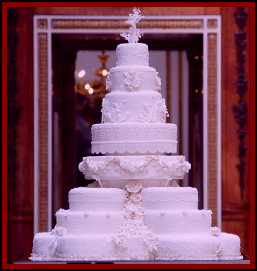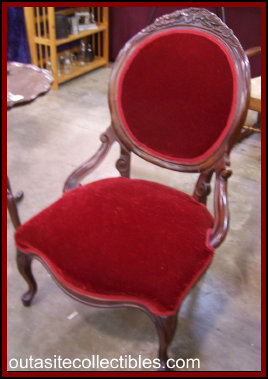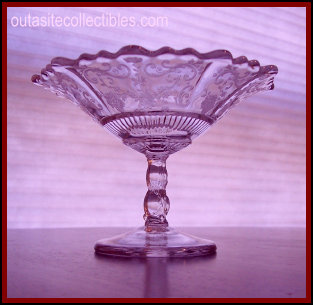









NOVA-Antiques.com does not manage, own, promote or operate the antique shows, flea markets, estate sales, auctions or other events
listed on our webpages. All information is provided as a service to our subscribers and clients. Although we try to verify
all listings for all events prior to publication, there are occasions where the time and place may have changed or the event did not
occur. It is a good idea to check with the owners, managers or promoters to make sure the event is being held before embarking
on a journey.


Mikey got hired at a local used auto dealership and his first (and only day) at work was given the task
of unlocking a car that had accidently been locked with the keys still inside. The nice folks that had purchased the car arrived
at the dealership and were told about the mishap, but that Mikey would soon have it open and they would drive away momentarily.








The couple walks around the back of the dealership where Mikey is feverishly working on the lock of the driver’s side door. The patiently waiting man is walking around the car admiring his new toy when by chance he reaches out and tries the passenger door
and to his astonishment, it opens easily. He says to Mikey, “Hey, this side is open.” To which Mikey replies, “Yeah, I know. I already got that side.”





Where You Might Find Slipper Chairs This Month . . .
On October 6-7, 2012, Fabulous Finds of Vienna, Virginia will hold their Barn
Sale. The Barn Sale is an annual event that features antique furniture, vintage collectibles and a lot of “flea market transformations.” The Barn will be open on Saturday from 8-4 and Sunday from 12-4. A portion of the proceeds of this sale go to the Susan G. Komen
Foundation.
October 5-6, 2012, Hamburg Antiques Show, Hamburg Fairgrounds, Hamburg, New York
October 6-7, 2012, Gaithersburg Antique
& Collectibles Show, Montgomery County Fairgrounds, Gaithersburg, Maryland
October 6-7, 2012, Rhinebeck Fall Antiques
Fair, Dutchess County Fairgrounds, Rhinebeck, New York
October 10-13, 2012, Olde Stark Antique Faire, County Fairgrounds,
Canton, Ohio
October 20-21, 2012, Salt City Autumn Antiques Show, New York State Fairgrounds, Syracuse, New York
October 27-28, 2012, Morristown
Armory Antiques Show, National Guard Armory, Morristown, New Jersey


Short History of the Slipper Chair . . . No Pun Intended
I was at an estate sale in Northern Virginia a few years ago and walked past
a lady who was admiring a couple of antique chairs and I overheard her say to her husband, “Wow, people must have been really short
at that time. Look at how low those chairs are.” And she was right in one respect; the chairs had short legs and no arms. However, she was wrong on the reason for the height of the chairs because what she was admiring were actually a pair of Victorian
slipper chairs.
Antique slipper chairs were made from about 1940 – 1900 in a few different styles including Rococo, Renaissance Revival, Queen Anne
and Victorian. Normally they were made of various woods including mahogany and cherry and had upholstered seats and backs. However come imported chairs from Europe were made of other materials including black lacquer. Slipper chairs were about 15
inches from the floor and thus had short legs and were mainly used in a ladies bedroom.
Ladies of the Victorian era wore many clothes
and in most cases needed a lot of help getting dressed. Remember that this was the era of laced corsets as well as camisoles
and petticoats. So after putting on all that clothing, they needed even more help donning their long stockings and shoes. Thus, the slipper chair was born; a comfortable chair with short legs that a woman could use to sit and put on her stockings and slippers.
Nowadays, dressing is a little different; gone are the days of the corset and petticoats . . . and most women dress in a lot less
clothes. However slipper chairs can still be very useful and many people have them not only in the bedroom, but in other rooms
of the house as well. Due to their diminutive stature and size, they can be used for seating in tight or small spaces. The only place that they are probably not useful is as a dining chair because their height makes them too short for traditional tables and
libraries because I have found them uncomfortable to read in.
It is very difficult to confuse a slipper chair with a wingback chair if you are familiar with antiques. Aslipper chair has short legs and it usually has no arms; it is normally wooden with an upholstered back and seat. Although a
wingback chair also usually has short legs, the difference is in the comfort. A wingback chair, sometimes also known as a grandfather
chair, normally is very padded and has a higher back and wings flanking the back and rolled padded arms. This type of chair,
because of the comfort level, was usually found in a gentleman’s study or library.
Wingback chairs have also been around a lot longer than the slipper chair, from about the mid 1700’s. Since the wingback chair
has been around so long, they come in many different styles including Queen Anne and Victorian. They were made in different
countries including France and England, but also made in America by designers such as Chippendale and Sheraton. Although very
comfortable, the initial intent of these chairs with the closed in sides, high back and wings was to actually protect a person from
the heat of a roaring fireplace.

Elegant Glass Not to be Confused with Depression Glass
During the Depression Era, many glass companies including Federal, Hazel Atlas,
Jeannette and Hocking made very inexpensive glass products. Most of these products, to the delight of many people, were given
away as premiums with the purchase of other products including soap, gasoline and cereal. And many people still collect Depression
Era glass, which comes in many different colors, styles and patterns. Due to the abundance of Depression Era glass then and
now, it is still relatively cheap to collect this type of glass. Depression Era glass however should not be confused with Elegant
Glass which was made in the same time period.
Although made in the same time period, that is where the similarity between Depression Glass and Elegant Glass ends. Elegant
Glass was made by many companies including Cambridge, Fostoria, Heisey and Tiffin. Unlike its cousin however, Elegant glass
was not given away, but rather sold at high end department and jewelry stores. The main reason for this was the more expensive
way that this glass was produced; Depression glass was mass produced by machine and patterns were raised on the glass; Elegant glass
was made by hand with intricate designs and patterns etched into the glass.
Some of the most beautiful etched glass was of course made by the Cambridge Glass Company in Ohio from 1901 until the late 50s. All of their glass was handmade and came in a vast array of colors including amber, ebony, azurite, ivory and cobalt. Most is
etched and came in a variety of patterns such as Rosepoint, Chantilly, Wildflower and it’s most popular Caprice which was featured
in many prominent magazines and publications.
Not just any wedding cake though, but a slice of wedding cake from Prince William and Kate Middleton’s wedding and designed by Fiona
Cairnes. I guess the auction of wedding cake is not as uncommon as I thought as they also have auctioned off pieces of other
royal weddings including Prince Charles and Diana and Prince William and Sarah Ferguson.
Morphy’s Auction will hold Carter’s Toy Museum auction on October 5-6, 2012 at the Boone County Fairgrounds in Lebanon,
Indiana. This auction will feature vintage toys as well as trains and dolls.
On Monday, October 15, 2012, Richard Opfer Auctioneering will
hold an Eclectic Collector auction in Timonium, MD. This auction will feature political posters and buttons, vintage advertising,
photos and ephemera.
I love cake as most of you probably do too. My favorite of all cakes is carrot cake and I have found
very few places that I can get a great tasting piece. My least favorite cake is actually wedding cake of any kind, not because
of what it stands for in and of itself, but because all I have ever tasted, tasted the same; bland and blah. However, recently
someone paid more than $3,100 for a slice of wedding cake.